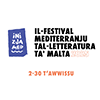A doctoral dissertation which started ten years ago on the life and work of the nephews of the great Renaissance master painter Antonello da Messina eventually evolved into a thorough and obsessive quest which has now been translated into a most exquisite publication recently launched to the public by its author, Dr Charlene Vella.
The long-anticipated book “In the Footsteps of Antonello Da Messina – The Antonelliani between Sicily and Venice”, was officially launched this month. It highlights the work of the ‘antonelliani’ and its art-historical interest lies in its crystallization of the diverse influences conditioning the art of South Italy and Sicily, namely Byzantine, Gothic, Burgundian and the Italian and Northern Renaissance.
Published by Midsea Books, the 430-page book is being hailed as “a significant achievement that has given these painters a secure footing in the southernmost spill of Renaissance in South Italy, Sicily and Malta,” according to Mario Buhagiar, Professor In History of Art. In the preface to the book, Professor Buhagiar explained that “Dr Charlene Vella made her first acquaintance with the ‘antonelliani’ during her university studies in Late Medieval Art of the Maltese Islands. This matured into a pervasive interest in their lives and artistic activities. In fact, in this book, Dr Vella covers the themes of family and travel throughout the generation that followed Antonello’s path, continued his artistic legacy, and inherited his workshop.”
“After almost a decade of research, Dr Vella today is probably the only person who has faithfully followed in the footsteps of the Saliba brothers from Veneto to Malta, and to every Sicilian hill-top town that commissioned their work,” wrote Dr Donal Cooper - a specialist in Italian Medieval and Renaissance art at the University of Cambridge who tutored Dr Vella throughout her doctoral research - in his introduction to the publication.

“In this publication, the antonelliani emerge from the master’s shadow as one of the most travelled and best documented painting workshops of the Renaissance Mediterranean. Therefore, the significance of this book lies in the way it portrays mobility, migration, and artistic exchange across and around the Mediterranean in the pre-Modern period. Most of all, it reveals how Antonello’s artistic legacy and his family’s exposure to Venice and its art nurtured a neglected Renaissance of painting in Sicily, Calabria, and Malta, one that would ultimately be superseded but which nonetheless possessed its own considerable appeal and invention,” he added.
“Antonello da Messina (1430-79) was an Italian Quattrocento Renaissance master whose paintings are noteworthy for their remarkable use of the oil medium, their realism and use of chiaroscuro that made him famous outside of his native Messina (Sicily). The art of his followers, particularly that of his nephews – Antonio and Pietro de Saliba and Salvo d’Antonio has often been included as an extension to the study on Antonello, and thus not treated holistically in its own right and thus has often been overlooked.” explains Dr Vella. “I believe that understanding what survives, what we know and what else can be deciphered about these artists who were active immediately following the master’s death and whose art was in demand until the early 1530s, would provide more insight on Antonello himself and this was the point of departure for this project,” she added.
“Several aspects came to light, including the importance of marriage alliances for the sake of the bottega where a number of goldsmiths, wood carvers and painters worked closely and in sync, as well as a special connection with the Maltese islands through Antonello’s brother-in-law Giovanni de Saliba,” concluded Dr Vella.
Besides having authored, contributed to, and edited other publications, Dr Vella is also the author of “The Mediterranean Artistic Context of Late Medieval Malta:1091-1530” (Midsea Books, 2013). She also leads research projects on Late Medieval and Renaissance art works such as the diagnostic tests carried out on Renaissance paintings by Antonello da Messina’s followers on Malta (Antonio de Saliba and Salvo d’Antonio) and which are subsequently conserved and restored.



